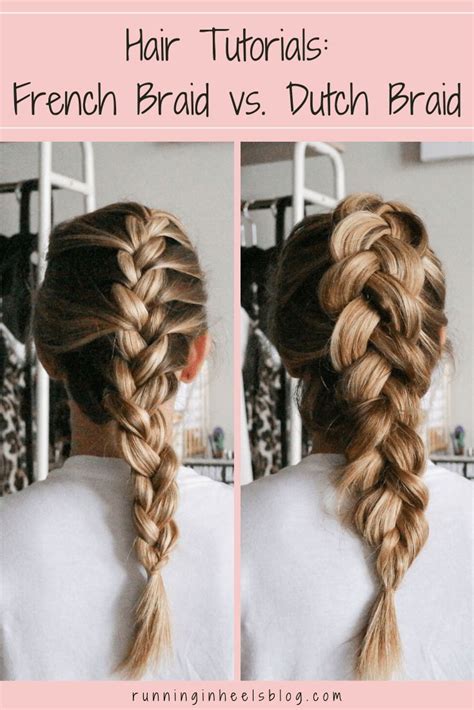Dutch Braids
Introduction

Dutch braids, also known as inverted French braids, are characterized by their intricate and eye-catching appearance. They originate from Europe and have gained popularity worldwide due to their versatility and ability to complement various hairstyles.
Construction
Dutch braids are woven by sectioning hair into three equal strands. The left strand is crossed over the middle strand, and then the right strand is crossed over the middle strand from beneath. This process is repeated while gradually incorporating hair from the sides.
Benefits
- Flattering: Dutch braids create a volumized and lifted look that flatters most face shapes.
- Versatile: They can be styled into various designs, from simple to elaborate updos.
- Secure: The intricate weaving technique ensures that Dutch braids stay securely in place.
French Braids
Introduction
French braids, on the other hand, are a classic and elegant braiding technique. They have been a staple in hairdressing for centuries and remain a popular choice for both everyday wear and special occasions.
Construction
French braids are woven by sectioning hair into three equal strands. The right strand is crossed over the middle strand, and then the left strand is crossed over the middle strand from beneath. This process is repeated while gradually incorporating hair from the sides.
Benefits
- Classic: French braids evoke a timeless and sophisticated aesthetic.
- Secure: The interweaving of strands provides stability, ensuring that the braid stays in place.
- Versatile: French braids can be styled into buns, ponytails, and other intricate designs.
Dutch Braids vs. French Braids: A Comparative Analysis
Table 1: Construction Differences
| Feature | Dutch Braid | French Braid |
|---|---|---|
| Strand crossing | Left over middle, right over middle from below | Right over middle, left over middle from below |
| Inverted | Yes | No |
| Appearance | Volumized, lifted | Flat |
Table 2: Benefits Comparison
| Benefit | Dutch Braid | French Braid |
|---|---|---|
| Flattering | Most face shapes | Oval face shapes |
| Versatile | Yes | Yes |
| Secure | Yes | Yes |
| Time-consuming | Medium | Easy |
Table 3: Pain Points
| Pain Point | Dutch Braid | French Braid |
|---|---|---|
| Tension headaches | Possible due to tight weaving | Less likely |
| Hair breakage | Potential due to pulling | Minimal |
| Uncomfortable edges | May occur if braided too tightly | Less common |
Table 4: Common Mistakes to Avoid
| Mistake | Dutch Braid | French Braid |
|---|---|---|
| Over-tightening | Can lead to pain and breakage | Can flatten the braid |
| Inconsistent tension | Creates an uneven and messy look | Compromises the braid’s integrity |
| Uneven sections | Affects the overall aesthetic and stability of the braid | Can result in a bumpy or misshapen braid |
How to Braid: Step-by-Step Approach
Dutch Braid:
- Brush hair to remove tangles.
- Section hair into three equal strands.
- Cross the left strand over the middle strand.
- Cross the right strand over the middle strand from beneath.
- Gradually incorporate hair from the left side by crossing it over the middle strand.
- Cross the right strand over the middle strand from beneath.
- Repeat steps 5 and 6 until reaching the end of the hair.
- Secure the braid with a hair elastic.
French Braid:
- Brush hair to remove tangles.
- Section hair into three equal strands.
- Cross the right strand over the middle strand.
- Cross the left strand over the middle strand from beneath.
- Gradually incorporate hair from the right side by crossing it over the middle strand.
- Cross the left strand over the middle strand from beneath.
- Repeat steps 5 and 6 until reaching the end of the hair.
- Secure the braid with a hair elastic.
Conclusion
Choosing between Dutch braids and French braids ultimately depends on individual preferences and hairstyle goals. Dutch braids offer a more voluminous and dramatic look, while French braids provide a classic and elegant aesthetic. By understanding the construction differences, benefits, pain points, and common mistakes to avoid, you can effectively braid your hair and create stunning hairstyles.
